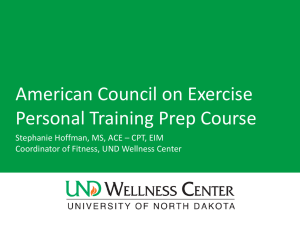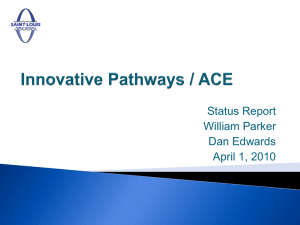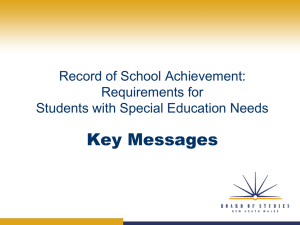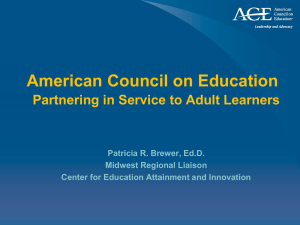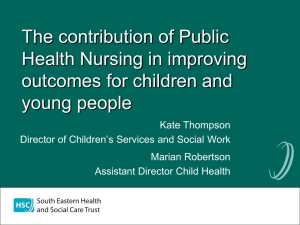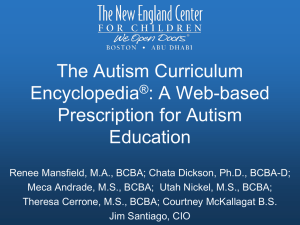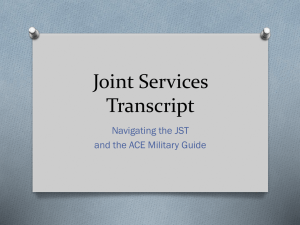Ace of : Clarity
advertisement
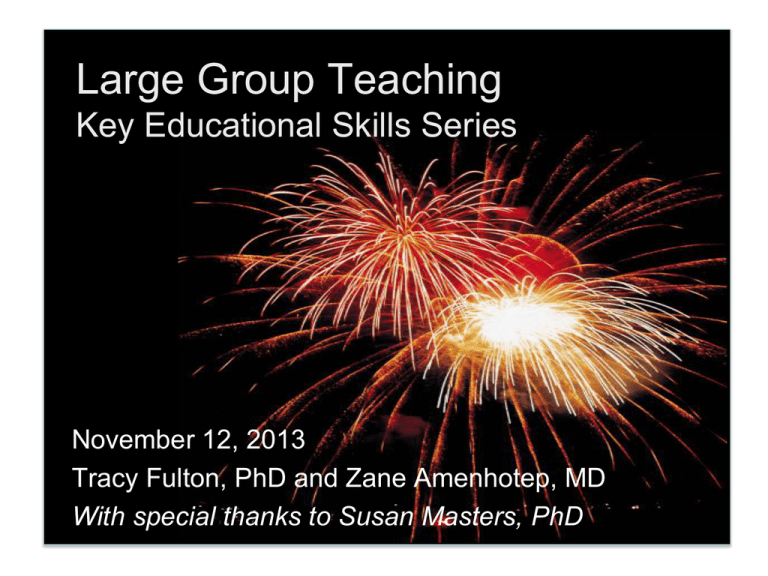
Large Group Teaching Key Educational Skills Series November 12, 2013 Tracy Fulton, PhD and Zane Amenhotep, MD With special thanks to Susan Masters, PhD Learning Objectives By the end of this workshop, learners should be able to: 1. Describe characteristics of effective lectures 2. Organize and deliver a brief lecture with: -an effective introduction and conclusion -a technique that engages learners -one concrete learning objective 3. Utilize effective visuals (PPT, board, etc) 4. Practice and receive feedback! What makes for an effective lecture? • As you watch these clips, take note of something “good” and something “bad” about each. What “good” vs “bad” behaviors are they modeling? (In one word!) Think – pair - share Dimensions of effective lecturing, based on student performance “The Four Aces” 1. Outcomes-based teaching 2. Clarity 3. Engagement 4. Enthusiasm Bulger, S., Mohr, D., and Walls, R. (2002) Brophy, J. and Good, T.L. (1986) Ace of : Outcomesbased teaching through use of learning objectives Ace of : Outcomes-Based Teaching Learning objectives • Communicate what the learner should be able to do • Are measurable, specific, and not open to interpretation • Use Bloom’s taxonomy as a guide • Often devised as: “After this presentation, the learner will be able to ______________.” One minute “paper” Ace of : Be clear through… 1. 2. 3. Organization Use of visuals RESTRAINT Ace of : Clarity Organizing a lecture A A B Introduction C 1 B A C 2 B C 3 Conclusion For many people, the introduction and conclusions are the most memorable parts! Ace of : Clarity Planning the Introduction • Preview and/or bridge from last lecture • Establish climate • Gain attention Ace of : Clarity Organizing the Body Select three to five key points per hour – Cluster main ideas – Link to a learning outcome/objective – 2-3 subpoints for each I- A B II - A B C III - A B C IV - A B 1 2 1 2 3 1 2 1 2 1 2 3 Ace of : Clarity Planning the Conclusion • Summarize and provide closure • Bridge to next lecture • Build in time for questions • Finish concretely “Thank you” Ace of : Clarity Visuals: the rationale Telling alone Showing alone Telling & showing 90 80 70 60 50 40 30 • Illustrate ideas • Capture and focus attention • Increase learning 20 10 0 Recall 3 hrs later Recall 3 days later As long as they are related to your key points! Ace of : Clarity PowerPoint Pros Cons Part of II: : “Aim”… Ace Clarity How would you react to this slide? How could you improve it? Ace of : Clarity Increase legibility • Minimize amount of text – Aim for: <7 words x 7 lines • Use a font people can read – Screen display fonts preferred to print display – Verdana Trebuchet Georgia • Careful with dark backgrounds • One idea per slide Ace of : Clarity How many slides? You are preparing a 50 minute lecture for first-year students. You know that these students often ask questions in class. How many slides should you include in your talk? A. B. C. D. E. 16 26 36 46 56 Show of hands Likely To Be Too Much For 50 Minutes Ace of : Clarity How would you react to this slide? How could you improve it? Ace of : Clarity How would you react to this slide? colon stomach esophagus How could you improve it? Ace of : Clarity Just… Keep it simple! • Annotate/progressive visuals • Simple template • Stick to learning objectives • One idea per slide Part III: “Fire!” Be careful with the laser pointer! “For God’s sake, Edwards. Put the laser pointer away.” Ace of : Clarity Effective annotation • • • • Plan and practice in advance Write legibly Model the reasoning process Use color I’m using the app _________, annotating a pdf file Ace of : Engage! Get attention Active learning Ace of : Engagement Can you list techniques used during this lecture that promote active learning? Group brainstorm Ace of : Engagement Involve (and assess) learners • Ask for students’ questions • Ask your own questions and wait! • Incorporate active learning activities – Show of hands – Subdivide into groups – ARS q’s – Think-pair-share – Brainstorm Ace of : Engagement A new paradigm in the lecture hall: “The Flipped Classroom” • Master basic concepts BEFORE class • Use class time for higher level activities • Team-Based Learning takes a similar approach • Is this a lecture? NO • Do students learn? YES Ace of : Be enthusiastic (in your own way…) Part of III:: “Fire!” Ace Enthusiasm Delivering dynamic lectures Enthusiasm, enthusiasm, enthusiasm! Bueller? Part of III:: “Fire!” Ace Enthusiasm Delivering dynamic lectures • Effectively use – Voice – Movement – Gestures – Eye contact – Humor Ace of : Enthusiasm See Walter Lewin, MIT physics prof, for enthusiasm! Practice: preferably with a human Especially the transitions Practice: Check Out the Venue Excellent lecturers • • • • • Prepare carefully Organize clearly Represent ideas visually Engage learners Use techniques to convey and generate enthusiasm • Practice • Have fun and make learning fun! References and Resources • Practical teaching: Great presentations every time. Irby, The Clinical Teacher, 2004; 1: 5-9 A short overview of the key elements for a dynamic, effective presentation. • Stack the Deck in Your Favor by Using the Four Aces of Effective Teaching. Bulger, Mohr, and Walls, The Journal of Effective Teaching, 2002; 5(2). Available at: http://www.uncwil.edu/cte/et/articles/bulger/ Supports the “Four Aces” concept with evidence from educational literature. • Death by PowerPoint by Alexei Kapterev. Available at: http://www.slideshare.net/thecroaker/death-by-powerpoint An entertaining presentation of practical “do’s and do not’s” for PowerPoint presentations. • How do I use PowerPoint to Teach? By Patrick Crispen. Available at: http://netsquirrel.com/powerpoint/powerpoint/how_do_i_use_powerpoint_to_teach.zip A detailed set of recommendations for using PowerPoint in education, with an evidence-based slant. Contains a list of references. 87 slides, but each is only a few sentences! • Twelve tips for use of a white board in clinical teaching: Reviving the chalk talk. Orlander, Medical Teacher, 2007; 29: 89-92 A concise approach to using the white-/chalk-board to its best advantage in the clinical setting. References and Resources • Improved Learning in a Large-Enrollment Physics Class. Deslauriers, Schelew, Wieman, Science, 2011; 332: 862-864. A great example of a study that finds benefit in “flipped” classroom-style learning. • Team-based Learning Collaborative website. http://www.teambasedlearning.org/ This excellent website has lots of orientation materials and examples of lessons. • UCSF Academy of Medical Educators TIP-TOP program http://medschool.ucsf.edu/academy/faculty_development/tip-top.aspx The SOM Academy has a program called “TIP-TOP” in which you can sign up to either 1) observe a seasoned teacher (TIP) or 2) be observed by a seasoned teacher and receive supportive structured feedback. Please see the Academy website for more details.

